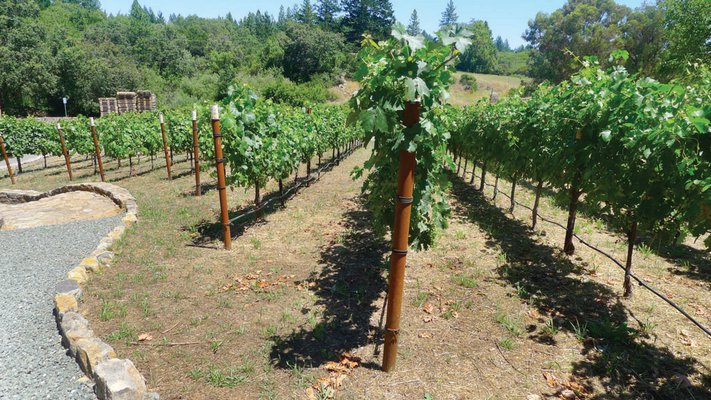
Happy New Year, one and all! This is a beautiful time for anyone fortunate enough to spend wintery days pruning grapevines, exploring the East End’s wooded trails, or enjoying a stroll along the shore. With branches bare, the slanting rays of the sun give new perspectives on nature, and also on the effects we have had, often in our enthusiasm for this region, in changing our open spaces.
When I came to the East End in 1972 to plant grapevines here, both the North and South forks were visually so wide open that they had an almost barren, windswept quality. Most farmhouses stood unadorned, adjacent to fields of potatoes, with a few shade trees or a trellis of concord grape vines in each yard. There were some privet hedges, but not many. Even in Southampton, you could drive around and see the large shingled mansions from the street.
The farm my then-husband and I bought in Cutchogue had a tiny house, a big potato barn, and a few exotic plants besides the usual scattering of shade trees. In hot summer months, we literally lived under the big maple by the kitchen door, swatting away the little black beetles that fell on our picnic suppers from the leaves above. I heard that the prior owner, a farmer with many children, had stored bootlegged booze in his root cellar to augment the meager income gained from his potato, strawberry and cauliflower crops. He had no money to spare for landscaping, but he loved plants; in those lean winter months when he had a little time, he would visit the estates of Southampton and, once or twice, liberate a few snippets of plants he admired (most notably, a weeping mulberry tree, a variegated hydrangea, and a blue spruce), transplanting them to his yard.
When I came to farm there myself, these were also the plants I treasured. They stood apart from the ubiquitous, scruffy cedars, spirea and locust. We appreciated the tall privet hedge that formed a windbreak between our field and house. Our vineyard gave us our livelihood; our other plantings provided a refuge.
In 2000, after selling the vineyard and moving to a house in an open lot surrounded by farmland, I planted a similar privet windbreak and added a row of evergreens around my property, for beauty but also for privacy. Today, those trees are mature. They are tall and thick. They block some of my view of open farmland. Yes, I too have contributed to the suburbanization of this beloved place. And now, chagrined, I’m cutting some of those trees down.
It hit me like a ton of bricks this summer, when I drove along Scuttle Hole Road in Bridgehampton, how radically the innocent addition of beautiful trees and hedges to farms and fields that once were open has changed this region. We are losing the horizon-to-horizon views, the sunrises and sunsets once available to all. Now, people with wealth on a scale unimaginable in 1972, when the first laws to preserve ag lands were enacted, are buying preserved farms—not to farm, but as privacy buffer zones. Naturellement, these farms are being shielded with privet.
We have the best farmland in the world. Our soils are friable, loamy, boulder-free and rain-fed. We are part of a hungry metropolitan area that buys most of its food from another coast, or another country. Are alarms not going off in your head? Do you not see the urgency here, not just to preserve land, but to make it open and accessible to real farmers? Growing grapes for wine and shrubs, or sod, for landscaping dominate our ever-shrinking farms today. But, as much as I am an advocate for Long Island wine, I also see a need to grow annual food crops as important to our future.
Who will defend farming on Long Island? Last week, one our greatest champions, Joe Gergela, retired after 27 years as the executive director of the nonprofit Long Island Farm Bureau. He defended farming with tenacious optimism, always ready to find solutions that served not just farmers, but everyone. His genial, principled, fierce intelligence will be hard to replace.
Fortunately, the Peconic Land Trust and Southampton Town have become increasingly pro-active and creative in protecting both farmland and open land. And they have historic viewsheds in mind. Before the East End looks like Suburbia USA, we have some decisions to make.